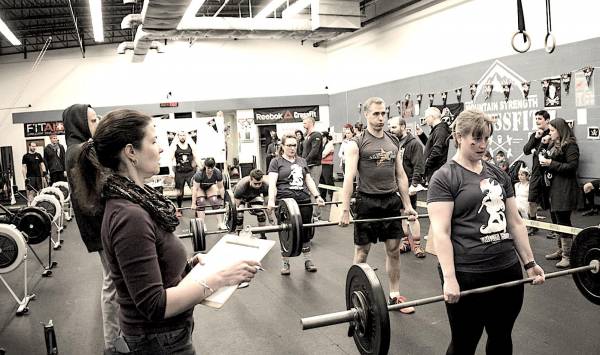The CrossFit Open is behind us, and Regionals are drawing to a close. For thousands, this spring was their first experience with competition in CrossFit, and it is through the veterans of the Open that they learn a time-honored habit among CrossFitters that needs to be broken: leaderboarding.
Before we talk about leaderboards, let’s talk about the benefits of competition. Among them are:
- Getting out of our comfort zone.
- Extending our experience beyond our current knowledge to learn new things.
- Increasing the value of our training by giving us goals.
- Doing better at something we love.
Competing allows us to learn by creating adversity, which is how we improve. But it is wise to know why we are competing. Is it to put ourselves to a higher test? To learn new things? Or is it to confirm our expectations of where we stand?
The Leaderboard Addiction
Many people learn to hate competing because they have not learned the difference between these ideas. I was one of them. As a mediocre teenage athlete (both mentally and physically), I didn’t need to compete to know where I stood, and so it only served to reinforce my already shaky self-confidence in my abilities. On the other hand, I had teammates who knew they were good, and they loved competing. Seeing themselves at the top of the scoreboard was a major dopamine boost.
Dopamine is the hormone responsible for seeking behavior, associated with the anticipation of a reward. Recently, a talk with Simon Sinek, author of Start With Why and Leaders Eat Last, has been circulating regarding millennials and their literal addiction to social media: each like or double tap is a dopamine boost, which is the same hormonal reaction we get from smoking, gambling, and drinking. Millennials are known for compulsively checking their phones for notifications, seeking a high.
I have seen the same behavior from CrossFit competitors. During competition they cannot tear themselves away from the leaderboard. Constantly hitting “refresh,” they are seeking that addictive high from being near the top. Athletes who need to confirm their expectations of how good they are will be the ones melting down if they fall short.

If you compete to tell you what you already know, you can’t grow. (Photo credit: Jorge Galvez)
Do You Compete to Grow?
When we compete to confirm our expectations of where we stand, we lose the greatest benefit of competition: learning through adversity. Over time, we may begin to see being challenged as a bad thing. After all, adversity takes away our identity as being a “top athlete” or “the best” or “one of the strong athletes” or “one of the fast athletes,” and so we compensate by avoiding challenge or making excuses about why we aren’t near the top, or why we don’t want to take on a more difficult competition. This is known as a fixed mindset, and it holds us back from our potential.
Growth mindset competitors compete in order to learn what their weaknesses are. Their goal is to root out their weaknesses, not because failure is fun, but because knowledge is power. Only by learning what their weaknesses are can they improve at the sport they love.
Now back to leaderboards.
A leaderboard is a useful tool, but only if we know how to use it. Think of football players reviewing tape with their coaches. Are they only watching the scoreboard to see who gets the points, or are they reviewing the details of their performance, regardless of whether they won or lost? If we are a growth mindset competitor, focused on learning, then we don’t need to see the leaderboard until the end of our competition. The information, up until that point, is incomplete. It’s like asking for a test to be graded when we’ve only addressed a quarter of the material.
How to Leaderboard the Right Way
Seeing how our placings stack up in a CrossFit competition is a great way to use a leaderboard to our advantage. There is usually a workout or two that stand out as being much lower than the others. Our weaknesses will show up in lower placings compared to our co-competitors, giving us instant insight into what we need to work on. It’s important to remember that the purpose of CrossFit is being a well-rounded athlete. Being strong is great, being fast is great, but being both is the whole point.
To clear up any potential misunderstandings, let me say now: leaderboards are not evil, and looking at them is not always a sign that we are overdependent on external feedback to confirm whether we are doing well. But it often is. If our emotional fortitude is going to be shaken by seeing that we’re at the bottom of a leaderboard, let’s skip it.
As we start the spring and summer competition season, remind yourself why you are competing: to create adversity in order to get better at something you love. During the competition, focus on what you can control: warm-up, recovery, and positive thinking. The leaderboard will be there at the end of the competition to learn from.






